The Native Instruments Maschine MK1 vs MK2 debate is running hot. I recently acquired the MK2 myself. I’ve been using the Maschine MK1 model for about 8 months and liked it a lot.
A lot of people are contemplating on wether to upgrade to MK2 or not. The MK2 is currently priced at 599 € by Native Instruments. It’s a lot of money to spend on an upgrade that may seem superficial on the surface.
Here is a review of the differences between the Maschine MK1 and MK2 hardware, along with my personal impressions. Maschine MK1 vs MK2, let the battle commence…
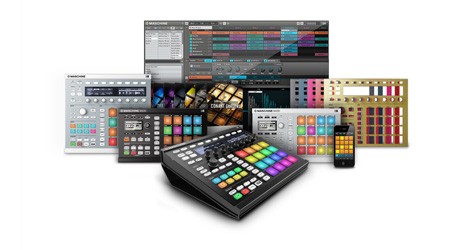
Revised Master Section
The first thing you notice is the layout of the master section has been changed. Instead of the three knobs, you now have a wheel and a bunch of buttons.
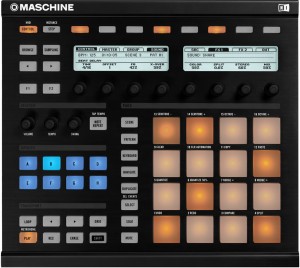
On the MK1 I sometimes accidentally brushed my hand against the knobs in the master section and changed the tempo or swing without actually realizing it. Not fun – especially in live situations where things can easily get a bit more wild and accidents like these are prone to happen.
On the Maschine MK2 it’s now almost impossible to change the master settings by accident. You first have to activate one of the buttons (volume, swing or tempo) and then use the wheel to adjust. I like the new system. It’s still nice and tactile, yet safe. You can still adjust the master settings with a single hand if need be. I did prefer the MK1 on the ability to very quickly adjust group volumes and the pitch of sounds using the master section knobs. But when faced with the choice, I will rather go for safer operation and less of the annoying accidents.
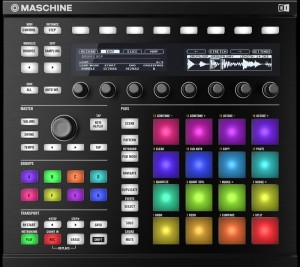
The new encoder wheel has stepped action which makes using it very precise. It’s nice to be able to count your adjustments as clicks. When volume, swing and tempo buttons are inactive the encoder works as a jog wheel for moving around in the arrangement or navigating the browser. Pushing the wheel down doubles up as enter key.
Browsing and loading things up with the new wheel is very handy. However I had no gripes about the browsing functions on the MK1 to be honest. If you prefer to do it the MK1 way… Yes you still can, batman.
In addition the master section now has an enter button and left/right arrow buttons for adjusting master parameters/browsing/navigating. Why? I don’t know.
With the encoder wheel performing the same tasks, I don’t really find myself using or needing those buttons. Right now it kind of baffles me why they where even added. Would have been cool to see some additional features instead of yet another way of doing the same thing, right? Am I missing something here?
Multicolor Pads
Of course you knew this one already. Maschine now looks like a rainbow. It does look vivid – especially in the dark.
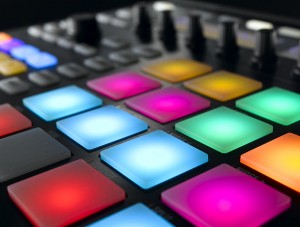
With the Maschine 1.8 software upgrade it’s now possible to set up the colors any way you like. There are 16 different ones to choose from.
There is no denying that this ability to set up colors makes a big difference in a live situation. You could set them up based on the type of the sounds or maybe the part of the performance that they’re used in. There are lots of possibilities.
Every second counts in a performance. The less you have to remember and the less time you have to spend monitoring your sounds, the better. There will still be enough other things to memorize.
The multicolor operation also comes in very handy when working with Maschine in MIDI-mode. I use Maschine as a MIDI-controller in Ableton Live. The colors really make it much easier to get a good overview of things when navigating within the project, launching clips or playing instruments using the pads. You can switch scales from the controller and it shows the different notes in different colors (Push style). Very cool. With MK1 every page looked the same and it required a lot of memorizing to keep tabs on which button does what.
So, it’s definitely not just cosmetic. The multicolored pads make things more intuitive and are a huge deal in my books.
New Sensations
The new pads feel a bit different. They are more silky – even a bit slippery but in a good way. They do feel more sensitive to me when playing.
It was a joy to play on the MK1 and I am glad to see things have gotten even better with the MK2.
Pad sensitivity can be adjusted in the Maschine software. I’ve always had mine maxed out and I did notice a difference when switching to MK2.
I’ve read somewhere before that the pad sensitivity hasn’t been changed. I don’t know if they had an early unit or what – the difference is definitely real for me.
That’s good news for those of you who get serious about finger drumming.
Encoding
The eight small encoders are now made of a bit harder plastic (as opposed to softer rubber on the MK1). They still have a good grip.
They feel more delicate and are a lot more sensitive.
It won’t take as much yanking around to browse through long lists of sounds, which is great.
Oh Snap
All buttons (except for the actual drumpads) now make a distinct snap when pushed down. It’s nice and helps to have this response.
Not much else to say there really! Moving on.
New Displays
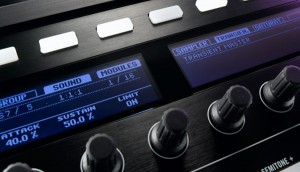
The displays are changed. They have been inverted – it’s now light blue text on a darker blue background.
It is a bit easier to see for sure, even from a low angle. Good contrast.
Nice improvement again, altough I would not say there was anything wrong with the old displays. Especially as it’s possible to adjust the contrast and brightness of the displays from the software and I’ve always had it half way.
Maschine MK2 Unplugged
Another subtle but potentially lifesaving feature is the redesigned USB and MIDI ports. It now supposedly takes more force to pull out the cables.
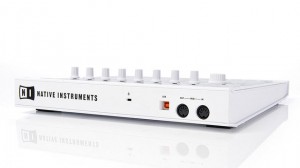
The USB port on my MK2 is definitely not as tight as the one on my Traktor Kontrol S4. While it certainly won’t pop out on it’s own, it doesn’t take THAT much force to pull out.
Having said that… Plugging off the USB cable during playback does not cause the Maschine software to crash or even stop playback. You just plug it right back in and the hardware picks things up again. This goes for the MK1 as well.
The MIDI cables actually require some work to pull out. They fit in pretty snug which is good.
Feet on the Ground
The MK2 has new rubber feet. I never had a problem with the feet on the MK1. But the new large soft rubber feet are definitely nice and have lots of grip.
Not a major feature but it’s very nice to see subtle improvements like these taking place. It shows they are really thinking things through and paying attention to details.
I am guessing this could make a bigger difference if you do a lot of finger drumming, or simply are a “heavy hitter”. Or if you come across a situation where you have to place Maschine on a slippery surface.
By the way… I have the additional Maschine stand as well which seems to have the same feet as the MK2. I can highly recommend the stand to anyone. It puts Maschine into a perfect position when sitting down in the studio. The Maschine stand is very sturdy and comes with a mounting adapter so you can set it up on a standard drum stand if you want.
New Markings and Color Options
This one is minor, but the markings on Maschine MK2 faceplate are also improved with better visibility. On the MK1 some of the markings were dark grey, where as on the black MK2 they are white. Easier to see even in a dark environment.
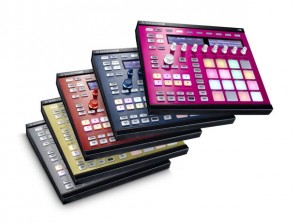
The Machine MK2 model comes in white and black chassis. There are also different color magnetic brushed aluminum face plates and knobs (custom kits) available direct from NI. It’s worth noting though that there are different kinds of faceplates and knobs available for the MK1 as well from third party manufacturers.
Maschine MK1 vs MK2 – Summing Up the Differences
It is clear that the biggest selling points of Maschine MK2 are the improvements it makes on the live performance side of things.
The multicolor pads are extremely helpful in identifying and grouping up sounds. They feel great too. The new way of handling volume, swing and tempo is nice and solves the problem of accidentally changing the master settings by brushing your hand against the knobs. The new feet should stop the unit from sliding around on the desk. Displays look a bit better and the markings are easier to see in dark. It’s a bit harder to unplug the USB and MIDI cables.
For studio use the difference isn’t that big. Surely the previously stated benefits still apply. Plus the multicolor pads are helpful if you are also using Maschine as a MIDI controller in Ableton Live for example.
Is it worth to upgrade? If you are a performer I think it’s a no-brainer. If you only use Maschine in studio, I would think twice.
The upgrade is definitely not as superficial as I thought it might be. There are all these little things taking place which by themselves aren’t much, but come together to form an undeniably improved user experience. It actually feels like the upgrade becomes more than the sum of its parts. Clearly a lot of thought and testing has been put into it.
Wether or not this will justify the price tag is up to you. I think Native Instruments have made a great job with the upgrade. But let’s not forget the MK1 is still (and will be) a great box. You really don’t need the latest and greatest to get the job done. Plus you can pick MK1’s up now for a good price.
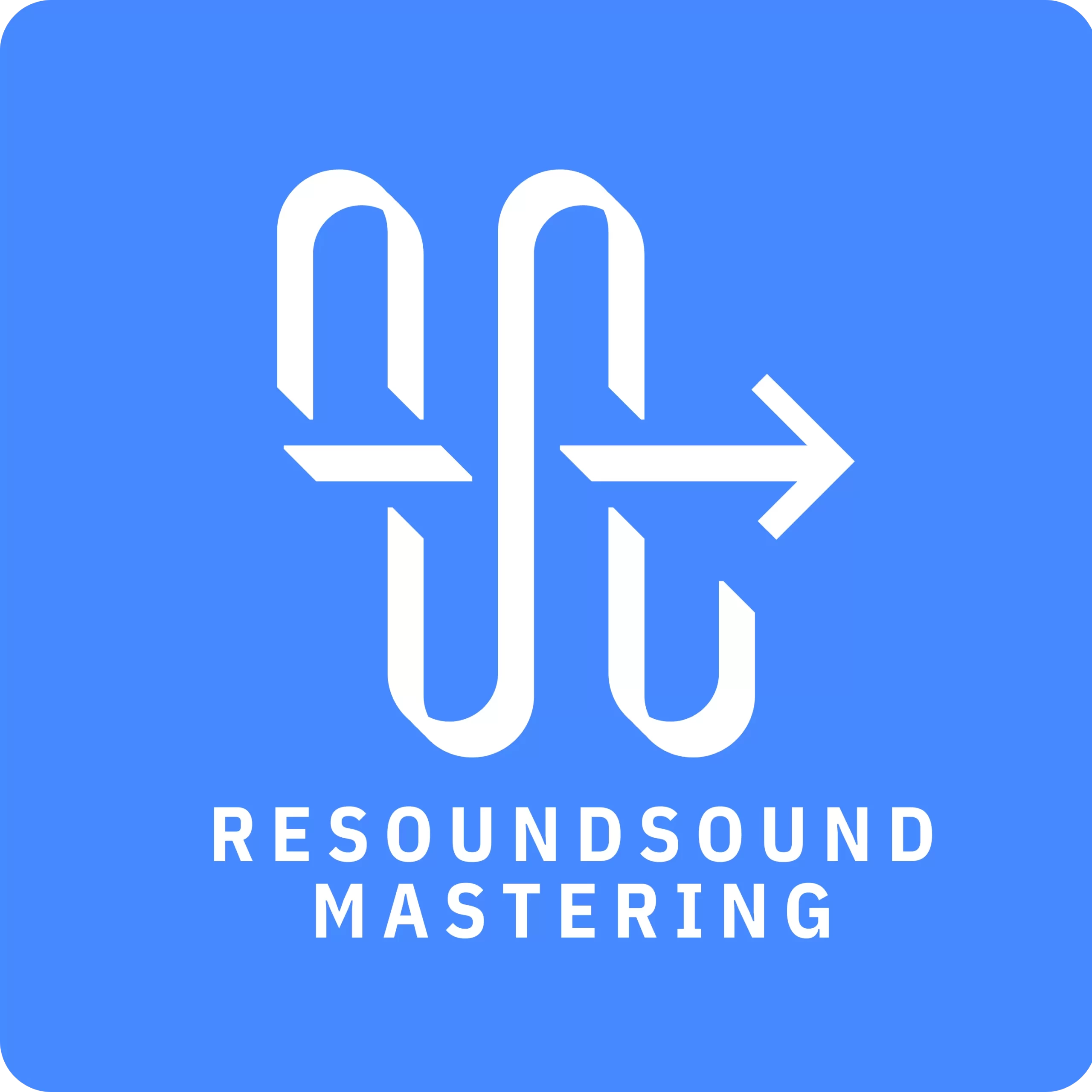
Leave a Reply